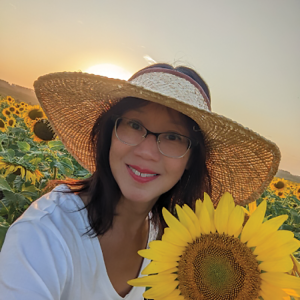By: Julia McGuire
 What is the best way to teach beekeeping to adults? Julia McGuire, a beekeeper instructor living in West Des Moines, believes that teaching is best done when it suits a student’s learning style.
What is the best way to teach beekeeping to adults? Julia McGuire, a beekeeper instructor living in West Des Moines, believes that teaching is best done when it suits a student’s learning style.
“In my experience, beekeeping knowledge has been transferred by oral tradition and conventional lecture-demonstration classes with textbooks,” states McGuire. “In my search for reference materials to serve new beekeepers, I found that we needed new reference materials. Learning styles stay with you after you graduate from school.” Long paragraphs in a textbook aren’t accessible to many learners, and the rise of audio and video content prove that. Yet, there are times when beekeepers need to refer to a guide, and a tangible hard copy is preferable. McGuire’s solution to that is a large, one page calendar called A Beekeeper’s Year.
A Beekeeper’s Year is a unique, graphic reference calendar based on crowd-sourced phenological data, and relates beekeeping chores to bloom periods. “This calendar has been requested numerous times since I began teaching in 2014. After I had participants across the state get involved in 2021, my confidence rose in creating both a planner and a calendar,” states McGuire. “Everyone responds to different materials in their own way, and I want to help everyone be successful in their beekeeping.”
McGuire’s Phenology Planner for Beekeepers was published in 2021 and distributed in 2022. Her calendar, A Beekeeper’s Year, is a large double-sided card with a low-text format that shows her background as an education minor, in which she learned about tailoring teaching materials to suit different learning styles. The reverse side contains the same information for students who prefer a text-only format.
The Planner and Calendar are both free thanks to grant funding from North Central SARE. Instructors who would like to share the Planner and/or the Calendar with their students can pay shipping for packs of ten (10). Individual beekeepers are also welcome to order A Beekeeper’s Year for $6 through the website juliecache.com. Preview the calendar to the right and the text-only format on the following pages.
North Central SARE offers competitive grants and educational opportunities in the Midwest. The Planner and Calendar outreach materials mentioned here are based upon work that is supported by the National Institute of Food and Agriculture, U.S. Department of Agriculture, under agreement number 2020-38640-31522 through the North Central Region SARE program under project number FNC21-1289. USDA is an equal opportunity employer and service provider. Any opinions, findings, conclusions, or recommendations expressed in this publication are those of the author(s) and do not necessarily reflect the view of the U.S. Department of Agriculture.
Julia McGuire inherited two beehives when her daughter left for college in 2012. Her beekeeping courses are held in person and online. Visit juliecache.com.
Honey bees work with what nature gives them. Flowering trees and plants end up in the bees’ hexagonal combs in the form of pollen and nectar. What nature is lacking also shows up in the combs, for example, as a lack of royal jelly for developing larval bees or as aggression from malnutrition and starvation. Beekeepers who pay attention to their hives can take those signs on the combs, combined with the Phenology Planner and/or A Beekeepers Phenology Calendar, and create a better nature, thereby preventing a canary in the coal mine situation.
All of the surveyed users of the Phenology Planner for Beekeepers stated that one season with the planner encouraged them to get more beneficial native trees and plants in the ground for improved natural forage (as opposed to sugar syrup as artificial feed) in future seasons. Doing this would benefit the bees’ nutrition needs as well as increase the quality of our soil, water and air. Beekeepers’ mental health would also benefit because happy bees mean happy beekeepers.









